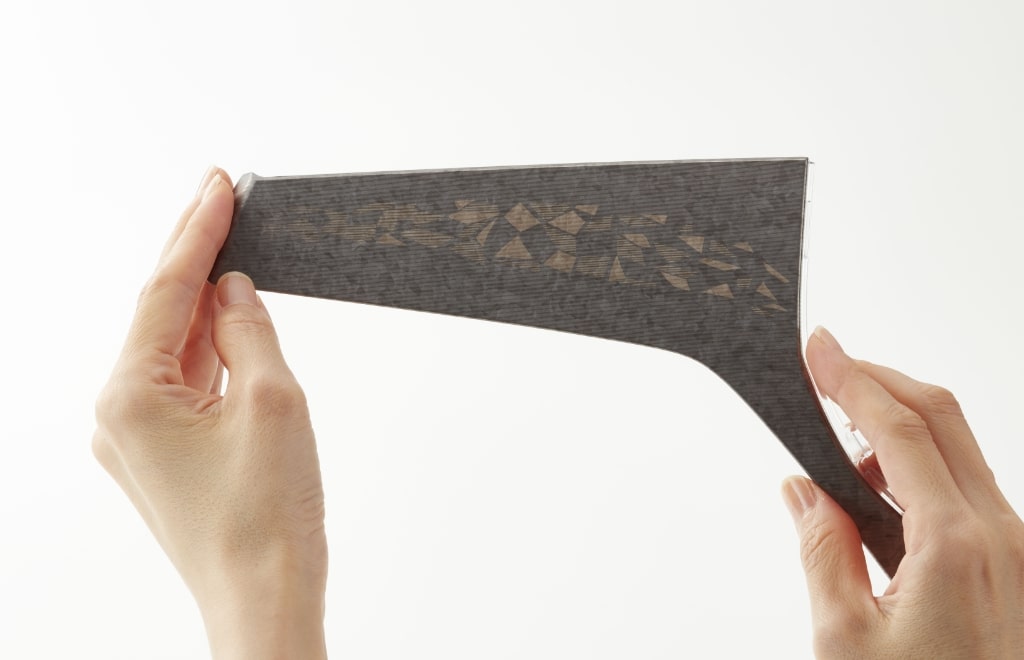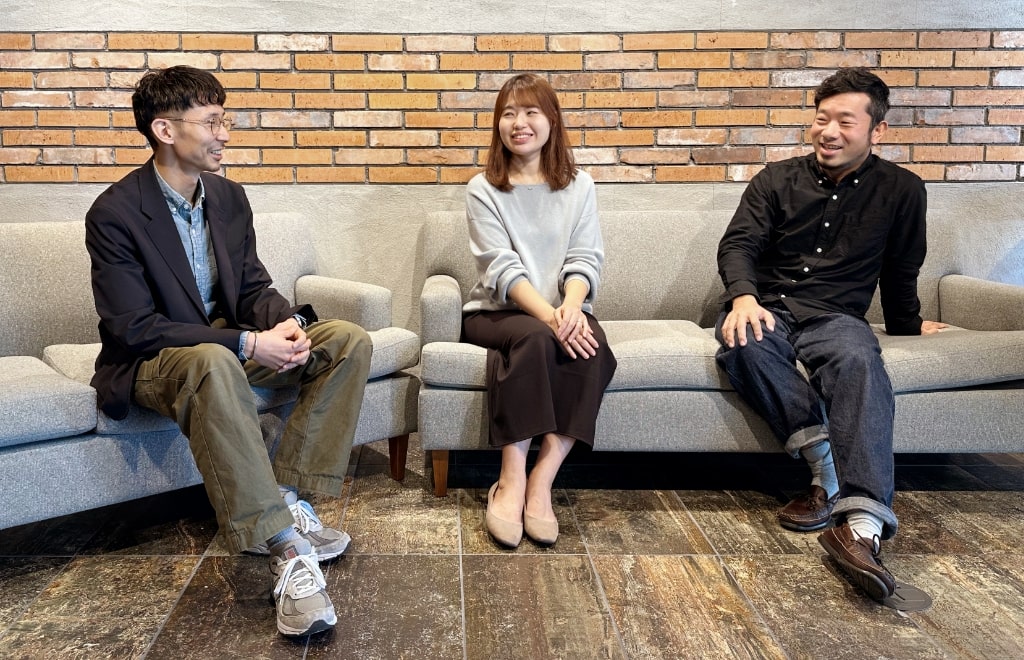Nissha’s “mutech” is a product concept for creating comfortable spaces by controlling excess information (noise) on an interface combining our printing techniques with technology. In this issue, we talked with three of the core members creating this concept, Kuwasaka, Nomura, and Harada, about the background leading up to its release.
Shintaro Kuwasaka: Deputy General Manager | Nissha Industrial and Trading (Shenzhen) Co., Ltd
Mark Nomura: Creative Director | Design & CMF Industrial Materials Business Unit Nissha Co., Ltd.
Moonjoo Harada: Business Strategy Marketing | Industrial Materials Business Unit Nissha Co., Ltd.
What led to starting up mutech?
Nomura I was in charge of the process from concept creation to branding.
After considering it with other project members, we settled upon the name “mutech,” but if we trace the mutech concept, of eliminating noise caused by excess information, we arrive back at Mark D. Weiser, known as the father of ubiquitous computing. Weiser, who was a computer scientist, apparently presented the concept of “calm technology,” a comfortable relationship between people and technology, in a paper from 1996. In the sense of harmonizing people and information technology, mutech has this in common with calm technology. Also, today major overseas home appliance companies are starting to use the term “calm tech,” so it seems like an idea whose time has come.
I expect you would have felt the same, Mr. Kuwasaka, as one of the people who launched mutech.
Kuwasaka Indeed, I did. The idea of bringing people and information technology into harmony senses this need in the form of “a fusion of decoration and function”.
The spur was that five years ago, one of our clients, an automobile manufacturer, wanted to seamlessly integrate information displays into the wood pattern they were using as an accent in their car interior.
Nissha’s dead front technology, where displays can be shown then hidden, had been used before that in home appliances, and we had continued to actively propose it for automobiles. But the demands regarding performance and shape required for creating proposals for automobiles were very strict, and unfortunately, we were not chosen. However, as specific needs from clients in automobile companies came out, we were confident that the need to fuse decoration and function would also come out for automobiles, so we got the rest of the company on board and started development for automobiles.

Kuwasaka Then of course I enjoy the work of decoration at Nissha.
Interior decorative parts in automobiles (parts that are used mainly for their aesthetic effect) are handled in a special way by clients as elements that create the atmosphere within a car, so rather than deciding to put in an order based only on price or performance, decisions are based on “emotional” design factors that are hard to put figures to, or the client’s aesthetic sense, which I find fascinating.
At the same time, it seemed like there was a trend among some of our clients to use fewer decorative parts in automobile interiors, or even none, making cars cold, mechanical.
But I still want to continue work related to staging, creating spaces. I think as a way to achieve this, the idea was to meet future needs by fusing decoration and function.

Kuwasaka The next thing is how to present this concept.
Nissha launched a brand called ecosense that represented environmentally-friendly products, services, and initiatives.
This ecosense expresses Nissha’s vision regarding environmental friendliness in a way that our customers can easily understand.
When I learned about this, I felt that our vision (provided values) that aim at harmony between people and information technology through the fusion of decoration and function should be expressed in a form that customers can easily grasp, and not in the sense of “we just hope they’ll get it.”
How did mutech get its name?
Harada The name “mutech” is a portmanteau of the words “mute” and “technology”. I was in charge of its naming, and wanted to create a name that customers around the world would understand, so I talked with Nissha employees both in Japan and overseas a number of times before making the decision. Other proposals included Inn (from the Chinese character “to hide”), Smart, Harmony, and Magic. We came up with quite a variety.
In particular, Inn was proposed by one of our Chinese staff, and it was a serious candidate that came across as a word that expressed the importance of sensing calm even within the big city. However, in English, the word refers to a type of accommodation, and in Japan it might bring to mind ideas of drive-in or drive-inn signs, so it had different meanings in different countries. [Laughs]
So while we were studying the issue, we also got designers from our overseas branches to chime in a number of times. We learned that “mute” is a well understood word by an English speaker. There is also its use in “muted color,” so this ideas of integration with space is what led to our decision.

What do we want to tell our customers through mutech?
Harada Our customers are generally suppliers, but by intermixing the clear concept of mutech when we present Nissha’s technology, we can get broad interest from designers, planners, and management as well.
Nomura The word “brand” incorporates the meaning of “keeping the promise we showed to society.” So Nissha responds unstintingly to an attentive presence and people who sympathize with the message of mutech. We want to remain sincere in the message that we present.
Harada True. At the same time, I think branding is very important within the company. We are selling our customers the “comfortable value” of mutech, rather than parts. I think that if we can share that kind of thinking, and if everyone – engineers, production and administrative staff – can work to a common goal, motivation will rise, and in the long term, that will form the seeds for new technologies to be born.
Kuwasaka Even B2B materials manufacturers have brands recognized by the general public, don’t they? For example, in the apparel industry, we have fabric and textile brands. Employees in the companies that make these probably have a sense of contributing to society above and beyond apparel brands, and the general public also can decide to buy high-quality fabric brands or high-performance textile brands.
With mutech, we aren’t expecting to see it as a way to get through to the general public, but Nissha employees can get the feeling of what sort of values they are providing to the general public, what way are they contributing to society. That’s what we are looking at.
REFERENCE
Mark D.Weiser (American, 1952-1999)
Computer scientist, CTO for Xerox PARC
Amber Case, “Calm Technology: Principles and Patterns for Non-Intrusive Design”



